Literary rating: ★★★★★
Kick-butt quotient: ☆☆
 One of my favorite fantasy authors, Patricia C. Wrede [pronounced as “Reedy”] began her writing career in the late 70s; this book, published in 1987, is part of one of her earliest bodies of work, the five-novel Lyra series. However, it’s essentially a stand-alone; though all five of the books are set in the author’s fantasy world of Lyra, they’re all about entirely different sets of characters, widely separated geographically or chronologically (or both –like Tolkien’s Middle Earth, Lyra has a very long fictional history), and are unrelated in their plots.
One of my favorite fantasy authors, Patricia C. Wrede [pronounced as “Reedy”] began her writing career in the late 70s; this book, published in 1987, is part of one of her earliest bodies of work, the five-novel Lyra series. However, it’s essentially a stand-alone; though all five of the books are set in the author’s fantasy world of Lyra, they’re all about entirely different sets of characters, widely separated geographically or chronologically (or both –like Tolkien’s Middle Earth, Lyra has a very long fictional history), and are unrelated in their plots.
As is usual in traditional fantasy, Lyra is a low-tech world much like medieval Europe, except that magic really works there and is universally recognized as a reality. Also unlike medieval Europe, it has no equivalent of the Roman Catholic Church; such religion as it has is a vague polytheism that doesn’t bulk large in the story. It’s home to five races (at least some of which can interbreed): humans, the elven Shee; the furred Wyrds, who are somewhat cat-like, but are as big as small humans, use spoken language and have opposable thumbs; the mostly aquatic Neira; and the gray-skinned sklathran’sy, often referred to by humans as “demons,” but as in the work of such writers as Piers Anthony and Robert Asprin, not evil fallen angels but just a non-human race with a talent for magic. (In fact, all of the non-human Lyran races have a more natural affinity for magic than humans, and that factor plays a role in this novel and probably the series as a whole.)
Our protagonist is Kayl Larrinar, who when the book opens is a 36-year-old innkeeper in a back-water village, five years a widow, and a caring mom to two kids (Dara and Mark, ages 12 and 10). But (although we learn some of these details a bit more gradually), she’s not native to the place. Orphaned or at least separated from her parents young, she was first raised among Thar raiders but then taken in as a child by the Sisterhood of Stars, an all-female clerisy of warriors and sorceresses who wield considerable influence in much of Lyra. Trained as a swordswoman (though her sword is now buried beneath her hearth –but she still knows how to use it), she was one of the order’s best.
But she broke with the Sisterhood 15 years ago, after an ill-fated expedition to the mysterious and ill-omened Twisted Tower that stands in the remote and inhospitable Windhome Mountains (the expedition where she met her late husband, a Varnan wizard). She never wants to see that place again. Now, however, sorceress Elder Sister Corrana, one Glyndon shal Morag (another survivor of the expedition and a fellow wizard and friend of Kayl’s husband), and an unsavory gaggle of Magicseekers, a human organization determined to get their hands on magical power by any means, fair or foul, are all converging on the inn, and the Tower’s casting its shadow again.
When I first read this novel in the 90s (I’ve now read it twice), I was really impressed by the wonderfully textured world-building. As I know now, that’s helped by this being the fourth book set in the same world. But it’s still impressive! The magic systems (built in the case of the Sisterhood on the use of true names) also have some thought behind them.) Kayl’s a very relatable heroine, a good and conscientious mom whose relationship to her kids is developed well, and realistically; plenty of real-world single moms, I think, could easily identify with her. There’s an element of clean, low-key romance that was also a plus for me. Wrede tells her story at a deliberate pace that allows for character development; and while there are points of suspense and danger, serious violent action occurs only at the climax of the plot. Kayl can (and does) handle herself very well in combat, but that doesn’t take up much of the plot.
So as action-heroine fiction goes, this is on the low action side; but that element is there, and some baddies who tangle with Kayl won’t tangle with anybody else again. (She’s good with a sword, but her knife-throwing skill is jaw-dropping.) Readers who prefer more exoticism and less realism in their fantasy, a plot-driven and faster-paced story, and more violence and sexual steam won’t like this as much as both my wife and I do. But for my part, I appreciated this as an involving, serious fantasy tale that respected my intelligence as a reader. And the positive message of cross-racial and cross-cultural friendship and respect, and the negative view of prejudice, have grown more rather than less relevant in the ensuing decades.
For me, the primary enjoyment of this reading experience was in spending time with these three-dimensional, vital and likable main characters. Even though Lyra is well-realized, it’s not such a fascinating setting in itself that I feel any need to re-visit it centuries later with totally different characters. But I can enthusiastically recommend this as a great adventure for fantasy fans who want a stand-alone rather than a gargantuan series.
Author: Patricia C. Wrede
Publisher: Ace (paperback) and Open Road Media (e-book); available through Amazon, both for Kindle and as a print book.
A version of this review previously appeared on Goodreads.





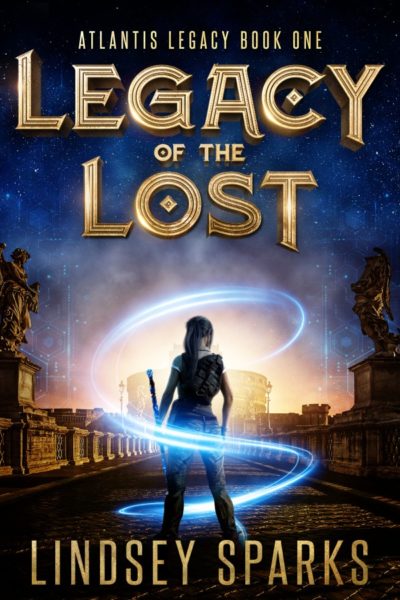 Cora Blackthorn’s teenage life has been severely hampered by an untreatable condition, which triggers a severe, painful reaction any time she has physical contact with another human being. She spends her live sequestered on Orcas Island, off the coast in the Pacific Northwest, but has found solace in the world of online gaming. Her mother, however, is a globe-trotting archaeologist, explorer and… well, let’s be honest, tomb raider. [Small letters, please, to avoid copyright suits] Then, Mom vanishes, the only clue being a cryptic package she sent back to her daughter. Cora now needs to come out of her seclusion, with the help of childhood friend, ex-soldier Raiden, and travel to Rome and the catacombs under the Vatican, in search of the truth about both what happened to her mother, as well as Cora’s own origins.
Cora Blackthorn’s teenage life has been severely hampered by an untreatable condition, which triggers a severe, painful reaction any time she has physical contact with another human being. She spends her live sequestered on Orcas Island, off the coast in the Pacific Northwest, but has found solace in the world of online gaming. Her mother, however, is a globe-trotting archaeologist, explorer and… well, let’s be honest, tomb raider. [Small letters, please, to avoid copyright suits] Then, Mom vanishes, the only clue being a cryptic package she sent back to her daughter. Cora now needs to come out of her seclusion, with the help of childhood friend, ex-soldier Raiden, and travel to Rome and the catacombs under the Vatican, in search of the truth about both what happened to her mother, as well as Cora’s own origins.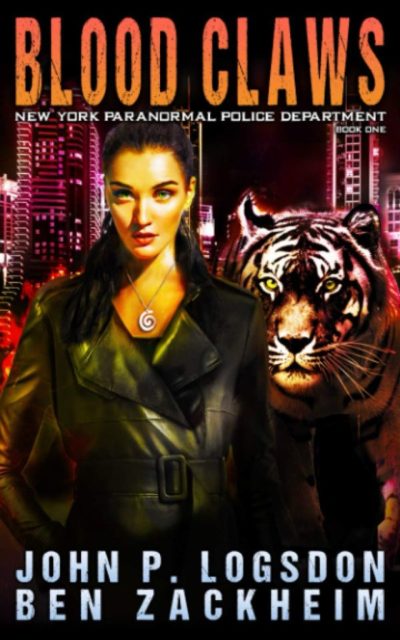 I picked this up without realizing I already had another book in the _______ Paranormal Police Department universe. That was
I picked this up without realizing I already had another book in the _______ Paranormal Police Department universe. That was  The structure here is kinda odd. While each of the three volumes included in this omnibus are effectively standalone stories, they each feel so slight as almost not to be worth bothering with. In particular, there seems to be a
The structure here is kinda odd. While each of the three volumes included in this omnibus are effectively standalone stories, they each feel so slight as almost not to be worth bothering with. In particular, there seems to be a  However, there are definite flaws in Brandvold’s craftsmanship here, starting with chronology. John Bass served in the Mexican War, after which he married and settled in Kansas. The Bass family graveyard on the homestead is said to hold the remains of an infant sibling who died over 20 years before 1865 –in other words, before 1845, and the Bass twins would have been born ca. 1849. But the Mexican War was fought from 1846-1848. There isn’t time between Feb. 1848 and the end of 1849 to fit in John Bass’ post-war activity, subsequent courtship and marriage, the couple’s move to Kansas, and four pregnancies prior to Reno and Sara. (And Kansas was not even opened for settlement until 1854.) If his general knowledge of U.S. history didn’t furnish red flags here, very basic research would have precluded these kinds of mistakes.
However, there are definite flaws in Brandvold’s craftsmanship here, starting with chronology. John Bass served in the Mexican War, after which he married and settled in Kansas. The Bass family graveyard on the homestead is said to hold the remains of an infant sibling who died over 20 years before 1865 –in other words, before 1845, and the Bass twins would have been born ca. 1849. But the Mexican War was fought from 1846-1848. There isn’t time between Feb. 1848 and the end of 1849 to fit in John Bass’ post-war activity, subsequent courtship and marriage, the couple’s move to Kansas, and four pregnancies prior to Reno and Sara. (And Kansas was not even opened for settlement until 1854.) If his general knowledge of U.S. history didn’t furnish red flags here, very basic research would have precluded these kinds of mistakes.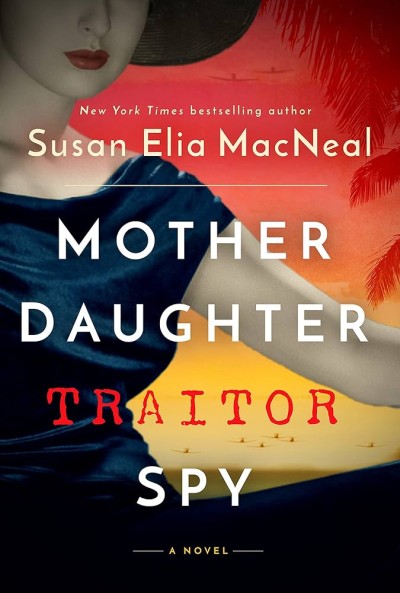 It’s often forgotten that America didn’t join World War II until almost three years after it started. In the early days, there was a strong isolationist movement, which saw the conflict as other countries’ problems, from people like aviator Charles Lindbergh and broad groups like the America First Committee. Indeed, there was a surprising amount of support for the Nazi regime: in February 1939, a rally at Madison Square Gardens drew twenty thousand people, and even after the war started in Europe, there was significant activity attempting to keep America out. It’s in this period, between the start of the war and the bombing of Pearl Harbor, that the story told here takes place.
It’s often forgotten that America didn’t join World War II until almost three years after it started. In the early days, there was a strong isolationist movement, which saw the conflict as other countries’ problems, from people like aviator Charles Lindbergh and broad groups like the America First Committee. Indeed, there was a surprising amount of support for the Nazi regime: in February 1939, a rally at Madison Square Gardens drew twenty thousand people, and even after the war started in Europe, there was significant activity attempting to keep America out. It’s in this period, between the start of the war and the bombing of Pearl Harbor, that the story told here takes place. This is an interesting idea. Take a real-life historical action heroine, whose life provides the underlying framework, and write a fictional story around that. Obviously, Annie Oakley really existed, and the broad strokes of her life here are accurate. If you’ve read
This is an interesting idea. Take a real-life historical action heroine, whose life provides the underlying framework, and write a fictional story around that. Obviously, Annie Oakley really existed, and the broad strokes of her life here are accurate. If you’ve read 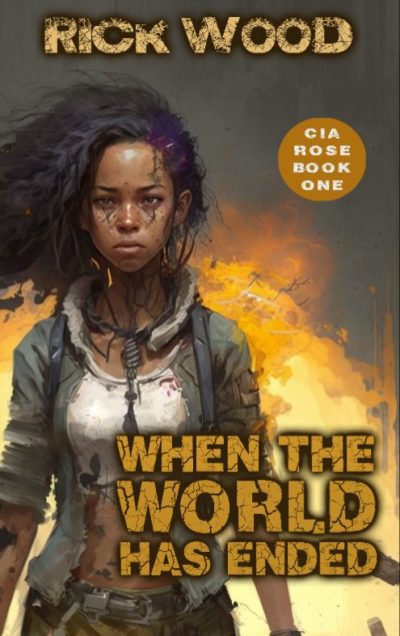 “It just seemed as if Hell opened up one day and that was that. Instant carnage, liberated monsters, death for all. They rose from somewhere beneath the ground, attacking for no clear reason and killing until God knows when.” That’s how this starts, so there’s no hanging around. Cia Rose is one of the few survivors, for whom every day survival is a perilous endeavour. She’s seventeen, and the daughter of a scientist. When the monsterpocalypse took place, the rich, influential and powerful – who, it appears, knew this was coming – headed for their shelters. Her father was allowed in, to research the invaders. Cia was not.
“It just seemed as if Hell opened up one day and that was that. Instant carnage, liberated monsters, death for all. They rose from somewhere beneath the ground, attacking for no clear reason and killing until God knows when.” That’s how this starts, so there’s no hanging around. Cia Rose is one of the few survivors, for whom every day survival is a perilous endeavour. She’s seventeen, and the daughter of a scientist. When the monsterpocalypse took place, the rich, influential and powerful – who, it appears, knew this was coming – headed for their shelters. Her father was allowed in, to research the invaders. Cia was not. This is the second novel in the author’s Unsanctioned Guardians trilogy, a prequel to her earlier Elioud Legacy series. The new trilogy presents the background of how the three heroines of the first one (all of whom were intelligence agents, though of different nationalities) met and formed their sub rosa partnership as off-the-books rescuers of female victims of sexual abuse and trafficking. In the first book,
This is the second novel in the author’s Unsanctioned Guardians trilogy, a prequel to her earlier Elioud Legacy series. The new trilogy presents the background of how the three heroines of the first one (all of whom were intelligence agents, though of different nationalities) met and formed their sub rosa partnership as off-the-books rescuers of female victims of sexual abuse and trafficking. In the first book,  Because the author and I are Goodreads friends, she graciously gifted me with a review copy of the paperback edition of this book, as she has with all of her books, as soon as it was published; though she knew I’d really liked the previous book, she didn’t pressure me for a favorable review, but trusted that the book would stand on its merits. It definitely did; I actually liked this one even better! What earned the added appreciation (and the fifth star) was what I felt was the heightened dimension of moral challenge and choice here, which for me often makes the difference between great and merely good fiction, and which isn’t as strongly present in the first book. Discerning what the right thing is here requires thinking for oneself, not just obeying orders; and deciding to do it comes with a real risk, not just of harm to life and limb, but of disapproval from the powerful, of serious repercussions to one’s career, and maybe of legal punishment. The strong, distinct characterizations of the three heroines, who are each very different individuals though sharing a basic gut instinct for justice and decency, is also a positive feature that makes the book stand out from the pack.
Because the author and I are Goodreads friends, she graciously gifted me with a review copy of the paperback edition of this book, as she has with all of her books, as soon as it was published; though she knew I’d really liked the previous book, she didn’t pressure me for a favorable review, but trusted that the book would stand on its merits. It definitely did; I actually liked this one even better! What earned the added appreciation (and the fifth star) was what I felt was the heightened dimension of moral challenge and choice here, which for me often makes the difference between great and merely good fiction, and which isn’t as strongly present in the first book. Discerning what the right thing is here requires thinking for oneself, not just obeying orders; and deciding to do it comes with a real risk, not just of harm to life and limb, but of disapproval from the powerful, of serious repercussions to one’s career, and maybe of legal punishment. The strong, distinct characterizations of the three heroines, who are each very different individuals though sharing a basic gut instinct for justice and decency, is also a positive feature that makes the book stand out from the pack.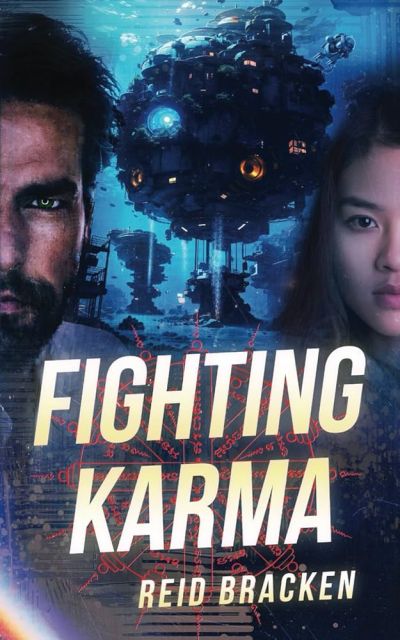 This is a sequel to
This is a sequel to